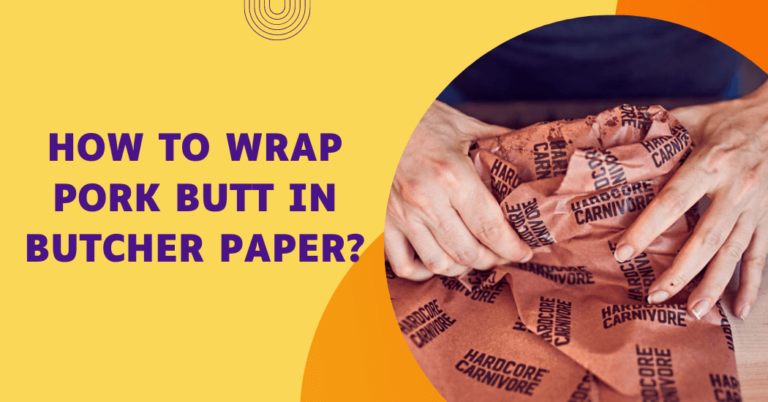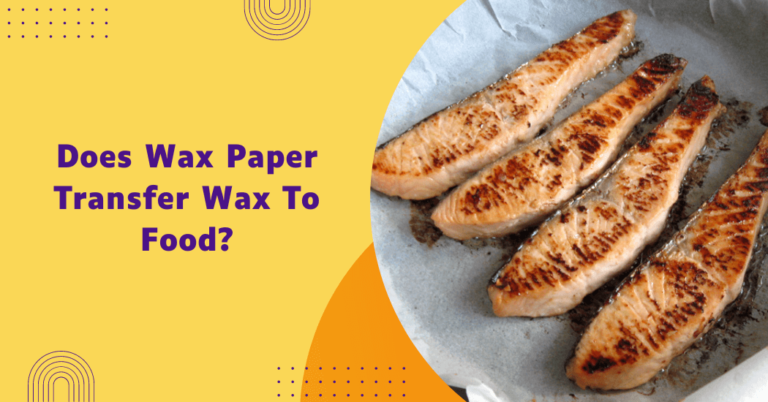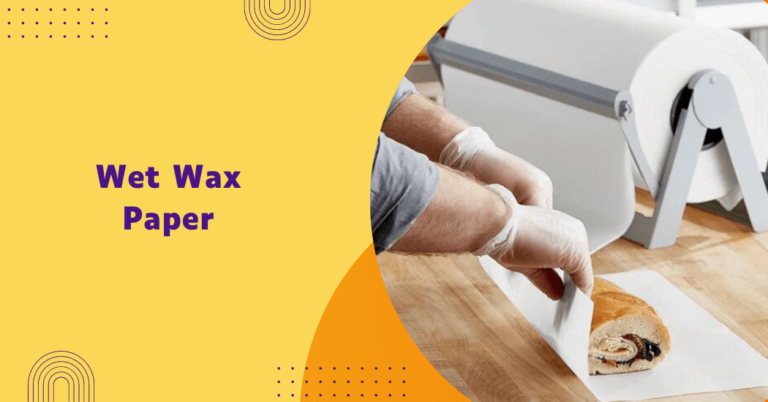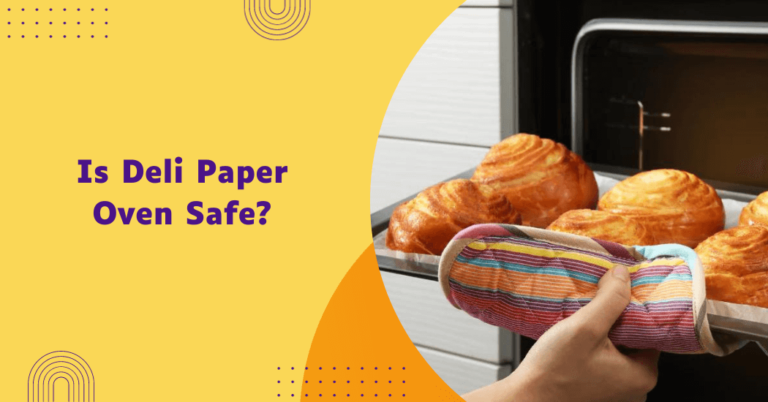Will wax paper burn in the oven?
In the realm of kitchen essentials, wax paper serves as a versatile tool for food preparation and storage. However, when it comes to using it in the oven, questions arise about its safety and potential hazards.
The concern lingers: Will wax paper burn in the oven? This inquiry is not only relevant to cooking enthusiasts but also crucial for ensuring kitchen safety and preventing mishaps. In this exploration, we will delve into the properties of wax paper, its recommended uses and whether exposing it to the oven’s heat poses any risks.
Understanding the behavior of wax paper in the oven is essential for making informed decisions in the kitchen and maintaining a secure cooking environment.
Basics of Wax Paper
Wax paper is a type of thin paper that has been coated with a layer of wax on single side or both sides. The most commonly used wax for coating is paraffin wax, which is derived from petroleum. Other types of waxes such as soy wax or beeswax can also be used in the manufacturing process.
The process of making wax paper involves heating the paper and then applying the melted wax using rollers. Once coated, the wax is allowed to cool and harden, creating a water-resistant and non-stick surface on the paper.
Wax paper has many practical uses in the kitchen, including lining baking sheets and wrapping food items for storage. It can also be used as a protective layer between stacked pots and pans, preventing scratches and sticking. Additionally, wax paper is often used for making candy or chocolate treats due to its non-stick properties.
Will wax paper burn?
Given its composition, wax paper is not designed to withstand high temperatures. When exposed to direct heat or flames, the wax coating can melt and potentially catch fire. Therefore, it is generally not recommended to use wax paper in the oven.
Moreover, using wax paper in the oven can also lead to undesirable results for your food. The melting wax can transfer onto your food and leave a waxy residue, altering its taste and texture. It can also cause the paper to break or tear, resulting in a mess in your oven.
Factors influencing the heat resistance of wax paper
The heat resistance of wax paper is affected by various factors some of these include:
- Type of wax used: As mentioned earlier, different types of wax can be used in the production of wax paper. Some waxes have a lower melting point than others, making the paper more susceptible to heat damage.
- Thickness of the paper: Thicker wax papers will generally have a higher heat resistance compared to thinner ones. This is because the wax coating in thicker paper is more substantial and can withstand higher temperatures.
- Amount of wax used: The more wax applied to the paper, the higher its heat resistance will be. However, too much wax can also cause the paper to become too stiff and brittle, compromising its functionality.
- Duration of exposure to heat: Even if the wax paper has a high heat resistance, prolonged exposure to high temperatures can eventually cause it to melt or catch fire.
- Heat distribution in the oven: If the heat in your oven is not evenly distributed, certain spots may become hotter than others. This can cause the wax paper to burn in some areas while remaining intact in others.
Potential risks & safety concerns of using wax paper
Using wax paper in the oven can pose several risks, including:
- Flammability: Wax paper is coated with a thin layer of wax, which can melt and potentially catch fire at high temperatures. Using wax paper in the oven may lead to a fire hazard, especially if it comes into direct contact with heating elements.
- Smoke and Fumes: When exposed to high temperatures, the wax coating on the paper can release smoke and fumes. Inhaling these fumes can be harmful to your health and may lead to respiratory issues.
- Air quality concerns: When heated, wax paper can release chemicals into the air, affecting the kitchen’s air quality. This can be particularly concerning for individuals with allergies or respiratory issues.
- Paper Ignition: The paper itself can also ignite at elevated temperatures, posing a fire risk. Oven temperatures can easily surpass the ignition point of wax paper, leading to unsafe conditions in the kitchen.
- Structural Integrity: Wax paper may not retain its structural integrity in the oven. It can become soft, lose its shape or tear, making it ineffective for its intended purpose of providing a barrier between the food and the cooking surface.
To ensure a safe and healthy cooking environment, it is best to avoid using wax paper in the oven. Instead, opt for parchment paper or aluminum foil as safer alternatives that can withstand higher temperatures without posing any risks.
Additionally, always carefully read and follow the manufacturer’s instructions when using any kitchen products.
Precautions for using wax paper in the oven
If you must use wax paper in the oven, here are a few precautions to keep in mind:
- Use only for low-heat baking: Since wax paper is not designed to withstand high temperatures, it is best to use it only for low-heat applications such as lining baking sheets or wrapping food items.
- Avoid direct contact with heating elements: When using wax paper in the oven, make sure it does not come into direct contact with heating elements. This can cause the paper to catch fire or melt, posing a safety hazard.
- Do not leave it unattended: Never leave wax paper unattended in the oven, especially at high temperatures. It is always best to keep an eye on your food and remove it from the oven as soon as it is done cooking.
- Use in moderation: While wax paper can be useful for certain kitchen tasks, it is best to use it in moderation. Excessive use or prolonged exposure to heat can lead to potential safety hazards and negatively impact your food’s taste and texture.
Recommended materials for oven use
To ensure a safe and hassle-free cooking experience in the oven, consider these recommended materials:
- Parchment paper: This is an excellent alternative to wax paper for lining baking sheets or wrapping food items for storage in the oven. It can withstand higher temperatures without compromising its structural integrity.
- Aluminum foil: Another popular option for high-heat applications in the oven, aluminum foil can help prevent food from sticking to the cooking surface. It is also useful for creating a barrier between the heating elements and your food.
- Silicone baking mats: These non-stick mats are specially designed for use in the oven and can withstand high temperatures without any safety concerns. They are reusable, making them an eco-friendly option.
- Oven-safe plastics: Some plastics are labeled as oven-safe and can be used for specific baking or roasting purposes. Always check the manufacturer’s recommendations for temperature limits.
Overall, it is crucial to be mindful of the materials you use in the oven and take necessary precautions to ensure a safe cooking experience.
So, next time you cook in the oven, carefully consider the materials you use and their safety implications.
Final Words
In conclusion, it is not recommended to use wax paper in the oven as it has a lower heat resistance compared to parchment paper or other oven-safe alternatives.
The wax coating on the paper can melt or catch fire at higher temperatures, posing a risk of food contamination and potential damage to the oven. To ensure safety and optimal cooking results, it is advisable to use oven-safe materials specifically designed for baking and roasting.






